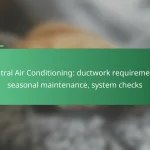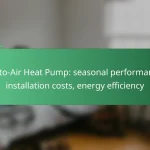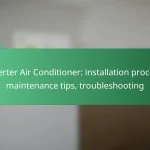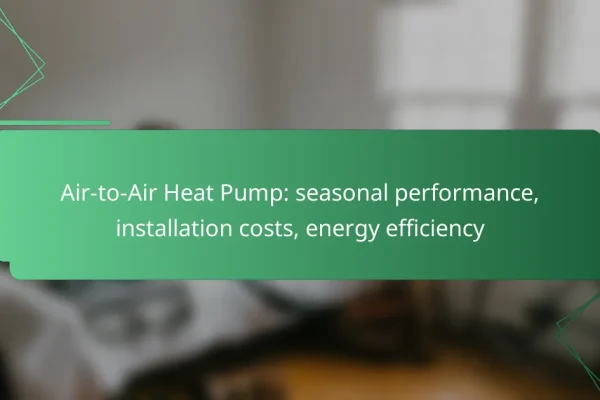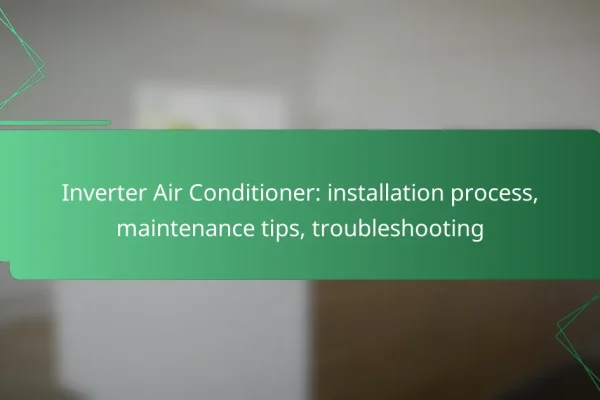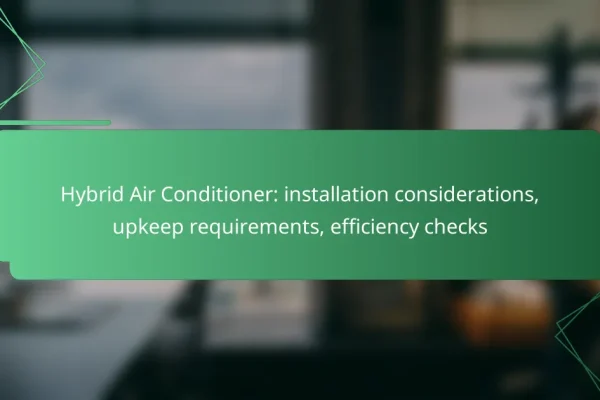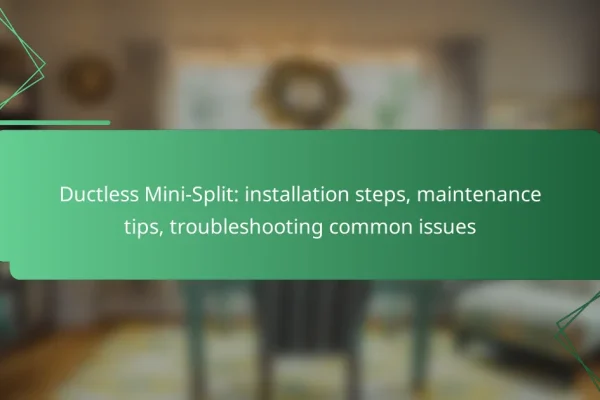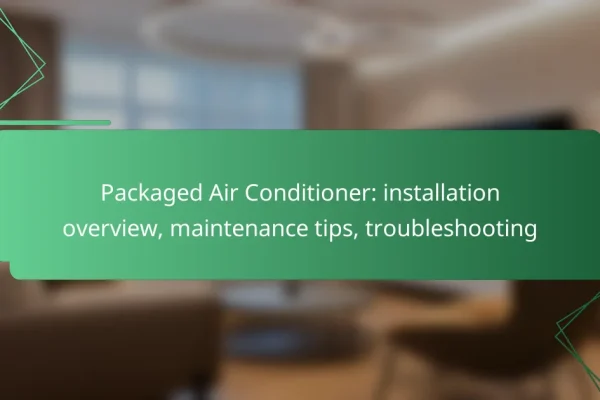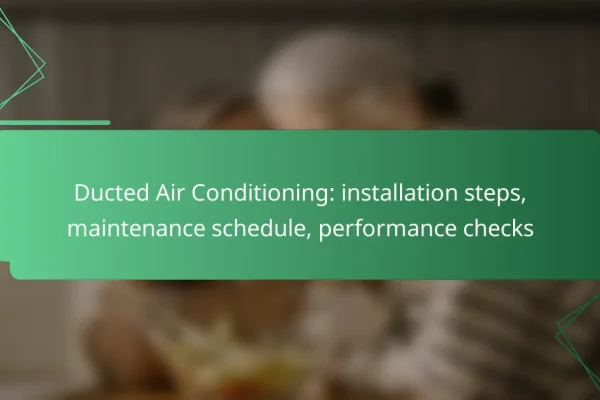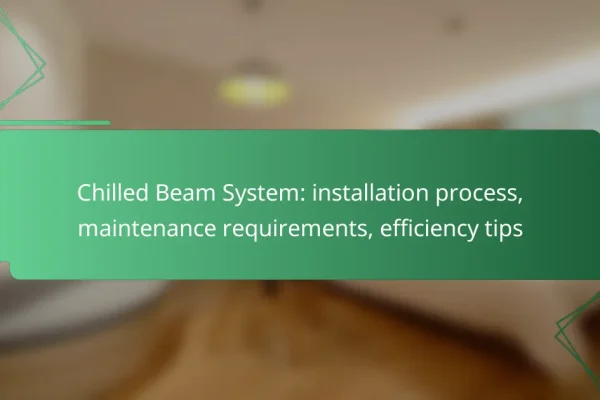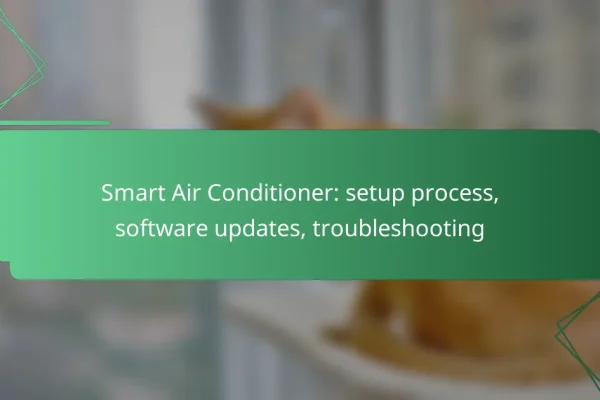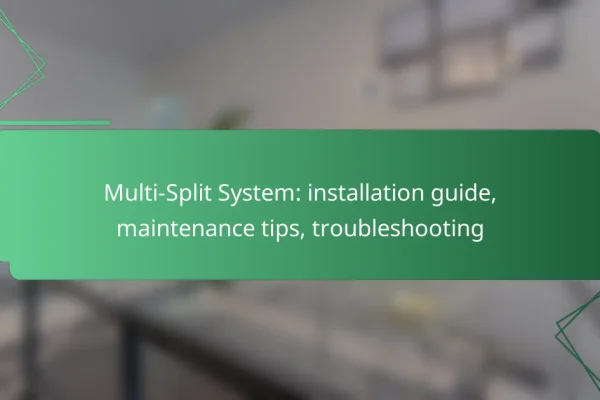What are the installation steps for air conditioning systems in the UK?
The installation of air conditioning systems in the UK involves several key steps to ensure optimal performance and compliance with local regulations. Proper planning and execution during each stage can significantly enhance system efficiency and longevity.
Site assessment
The first step in installing an air conditioning system is conducting a thorough site assessment. This involves evaluating the space where the unit will be installed, considering factors such as room size, insulation quality, and existing ventilation. It’s essential to identify any potential obstacles that could affect airflow or unit placement.
During the assessment, professionals often measure the area to determine the appropriate capacity of the air conditioning unit. This ensures that the system will effectively cool the space without excessive energy consumption.
Unit placement
Choosing the right location for the air conditioning unit is crucial for efficient operation. The outdoor unit should be placed in a well-ventilated area, away from obstructions like fences or walls, to allow for proper airflow. The indoor unit should be positioned to maximize air distribution throughout the room.
Consideration should also be given to the proximity of the indoor and outdoor units, as shorter refrigerant lines can reduce energy loss and improve efficiency. Avoid placing units in direct sunlight or near heat sources, as this can affect performance.
Electrical connections
Once the units are positioned, the next step is to establish electrical connections. This typically involves connecting the air conditioning unit to the electrical supply, ensuring compliance with UK electrical standards. A qualified electrician should perform this task to guarantee safety and adherence to regulations.
It’s important to use appropriately rated circuit breakers and wiring to prevent overloads. Additionally, installing a disconnect switch near the outdoor unit allows for easy access during maintenance or emergencies.
Refrigerant line installation
Installing the refrigerant lines is a critical part of the air conditioning installation process. These lines connect the indoor and outdoor units and must be properly insulated to prevent energy loss. The installation should follow manufacturer guidelines to ensure optimal performance.
During this step, technicians will typically vacuum the lines to remove moisture and air, which can compromise the system’s efficiency. Proper sealing of the connections is also vital to prevent refrigerant leaks, which can lead to costly repairs and environmental concerns.
System testing
The final step in the installation process is system testing. This involves running the air conditioning unit to ensure it operates correctly and efficiently. Technicians will check for proper airflow, temperature differentials, and any unusual noises that may indicate issues.
After testing, it’s advisable to provide the homeowner with operational instructions and maintenance tips. Regular maintenance, such as cleaning filters and checking refrigerant levels, is essential for prolonging the life of the system and maintaining efficiency.
What are the maintenance requirements for air conditioning systems?
Air conditioning systems require regular maintenance to ensure optimal performance and longevity. Key maintenance tasks include replacing filters, scheduling annual check-ups, and cleaning condenser coils.
Regular filter replacement
Replacing air filters is crucial for maintaining air quality and system efficiency. Filters should generally be checked monthly and replaced every 1-3 months, depending on usage and filter type.
Dirty filters restrict airflow, causing the system to work harder and potentially leading to breakdowns. Ensure you use the correct size and type of filter for your unit to maximize effectiveness.
Annual system check-ups
Scheduling annual check-ups with a qualified technician is essential for identifying potential issues before they escalate. During these inspections, professionals can assess refrigerant levels, check electrical components, and ensure overall system efficiency.
These check-ups can help extend the lifespan of your air conditioning unit and may also keep your energy bills lower by ensuring optimal performance. Consider scheduling these services in the spring to prepare for the summer months.
Cleaning condenser coils
Cleaning the condenser coils is vital for efficient heat exchange and overall system performance. Dust and debris can accumulate on the coils, reducing efficiency and increasing energy consumption.
Coils should be cleaned at least once a year, or more frequently if your unit is located in a dusty area. Use a soft brush or a vacuum to remove dirt, and consider hiring a professional for a thorough cleaning if needed.
How to choose an air conditioning system for your home?
Choosing an air conditioning system for your home involves considering energy efficiency, size, and brand reliability. Evaluate your specific cooling needs, budget, and local climate to make an informed decision.
Energy efficiency ratings
Energy efficiency ratings indicate how effectively an air conditioning system uses electricity to cool your home. Look for units with a Seasonal Energy Efficiency Ratio (SEER) rating of at least 14, as higher ratings typically mean lower energy bills.
In some regions, systems with a SEER rating above 16 may qualify for rebates or tax incentives. Always check local regulations and utility programs to maximize savings.
Size and capacity considerations
The size and capacity of an air conditioning system are crucial for effective cooling. A unit that is too small will struggle to cool your space, while an oversized unit can lead to inefficient operation and higher humidity levels.
To determine the right size, calculate the required British Thermal Units (BTUs) based on your home’s square footage. Generally, you need about 20 BTUs per square foot of living space, but factors like ceiling height and insulation quality can affect this estimate.
Brand recommendations
When selecting an air conditioning system, consider reputable brands known for reliability and performance. Brands like Trane, Carrier, and Lennox often receive high marks for efficiency and durability.
Research customer reviews and warranty options, as these can provide insight into long-term satisfaction and support. It’s also beneficial to consult local HVAC professionals for their recommendations based on your specific needs and climate conditions.
What are the costs associated with air conditioning installation in London?
The costs of air conditioning installation in London can vary significantly based on several factors, including the type of system, the size of the space, and the complexity of the installation. Generally, homeowners can expect to pay anywhere from £1,500 to £3,500 for a standard system installation.
Average installation costs
The average cost for installing an air conditioning system in London typically ranges from £2,000 to £3,000. This price often includes the unit itself, labor, and any necessary materials. For more complex systems, such as multi-zone units, costs can rise to £4,000 or more.
It’s essential to obtain multiple quotes from licensed contractors to ensure a competitive price. Always check if the installation includes warranties or maintenance packages, as these can add value to your investment.
Factors affecting pricing
<pSeveral factors can influence the overall cost of air conditioning installation. The type of system chosen—whether it's a window unit, split system, or central air system—can significantly affect pricing. Additionally, the size of the space being cooled and the existing infrastructure will impact installation complexity and costs.
Other considerations include the location of the installation, accessibility for installation, and any required electrical upgrades. Local regulations and permits may also add to the overall expense, so it’s advisable to consult with professionals who understand the local market.
Financing options
<pFor those concerned about upfront costs, various financing options are available to help manage air conditioning installation expenses. Many contractors offer payment plans or financing through third-party lenders, allowing homeowners to spread the cost over several months or years.
Additionally, some government programs may provide incentives or rebates for energy-efficient systems, which can offset installation costs. It’s beneficial to research these options thoroughly and consult with your installer to find the best financing solution for your needs.
What are common air conditioning problems and solutions?
Common air conditioning problems include insufficient cooling, unusual noises, and frequent cycling. Solutions often involve simple maintenance tasks, such as cleaning filters or checking refrigerant levels, but some issues may require professional intervention.
Insufficient Cooling
Insufficient cooling can stem from dirty air filters, low refrigerant levels, or malfunctioning thermostats. Regularly replacing or cleaning air filters can improve airflow and efficiency, while checking refrigerant levels may require a technician’s expertise.
If the thermostat is not functioning correctly, recalibrating or replacing it can help restore proper temperature control. In some cases, duct leaks can also lead to inadequate cooling, necessitating a thorough inspection of the ductwork.
Unusual Noises
Unusual noises from an air conditioning unit, such as banging or hissing, often indicate mechanical issues. Banging sounds may suggest loose components, while hissing could point to refrigerant leaks. Addressing these noises promptly can prevent further damage.
Regular maintenance checks can help identify potential problems before they escalate. If noises persist, consulting a qualified technician is advisable to diagnose and resolve the underlying issues effectively.
Frequent Cycling
Frequent cycling, where the air conditioning unit turns on and off rapidly, can lead to increased energy bills and wear on the system. This issue may arise from an improperly sized unit, a malfunctioning thermostat, or dirty coils.
To mitigate frequent cycling, ensure the system is appropriately sized for the space it cools. Cleaning the coils and checking the thermostat settings can also help maintain consistent operation. If problems persist, professional evaluation may be necessary.


